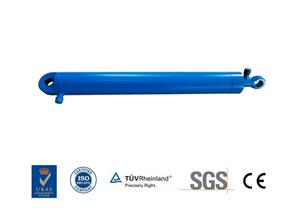Tap quality
1. The tap quality is not good
Main materials, CNC tool design, heat treatment, machining accuracy, coating quality, etc. For example, the size difference of the transition part of the tap section is too large or the transition fillet is not designed to cause stress concentration, and it is easy to break at the stress concentration during use. The section transition at the junction of the shank and the blade is too close to the welding port, which leads to the superposition of complex welding stress and the stress concentration at the section transition, resulting in a large stress concentration, causing the tap to break during use. For example, improper heat treatment process. During the heat treatment of the tap, if it is not preheated before quenching and heating, quenching is overheated or burned, not tempered in time, and cleaning is too early, it may cause the tap to crack. To a large extent, this is also an important reason why the overall performance of domestic taps is not as good as imported taps.
2. Improper tap selection
High-quality taps should be selected for tapping parts with too much hardness, such as cobalt-containing high-speed steel taps, cemented carbide taps, and coated taps. In addition, different tap designs are used in different workplaces. For example, the number, size, angle, etc. of the chip flute of the tap have an impact on the chip removal performance.
3. The tap does not match the processed material
This issue has received more and more attention in recent years. In the past, domestic manufacturers always felt that imported goods were good, but expensive goods were good. In fact, they were suitable. With the continuous increase of new materials and difficulty in processing, in order to meet this need, the variety of tool materials is also increasing. This requires choosing the right tap product before tapping.
4. The bottom hole diameter is too small
For example, when machining M5×0.5 threads of ferrous metal materials, a 4.5mm diameter drill should be used to make the bottom hole with a cutting tap. If a 4.2mm drill is used to make the bottom hole by mistake, the cutting part of the tap will inevitably increase when tapping. , And then break the tap. It is recommended to select the correct bottom hole diameter according to the type of tap and the material of the tapping piece. If there is no fully compatible drill bit, you can choose a larger one.
5. Material problem of attacking parts
The material of the tapping part is impure, and there are excessive hard spots or pores locally, which causes the tap to lose balance and break instantly.
6. The machine tool does not meet the accuracy requirements of the tap
Machine tools and clamping bodies are also very important, especially for high-quality taps. Only a certain precision of machine tools and clamping bodies can exert the performance of the tap. It is common that there is not enough concentricity. At the beginning of tapping, the starting position of the tap is incorrect, that is, the spindle axis is not concentric with the centerline of the bottom hole, and the torque is too large during the tapping process, which is the main reason for the tap to break.
7. Cutting fluid and lubricating oil are of poor quality
There are problems with the quality of cutting fluid and lubricating oil, and the quality of processed products is prone to defects such as burrs, and the service life will be greatly reduced.
8. Unreasonable cutting speed and feed
Reduce the cutting speed and reduce the feed rate, so that the advancing force of the tap is reduced, and the thread accuracy of its production is greatly reduced. This increases the roughness of the thread surface, and the thread aperture and thread accuracy cannot be controlled. Problems such as burrs Of course it is more inevitable. However, if the feed speed is too fast, the resulting torque is too large, which can easily cause the tap to break. The cutting speed during machine tapping is generally 6-15m/min for steel; 5-10m/min for quenched and tempered steel or harder steel; 2-7m/min for stainless steel; 8-10m/min for cast iron. In the case of the same material, the smaller tap diameter takes a higher value, and the larger tap diameter takes a lower value.
9. The operator's technology and skills did not meet the requirements




